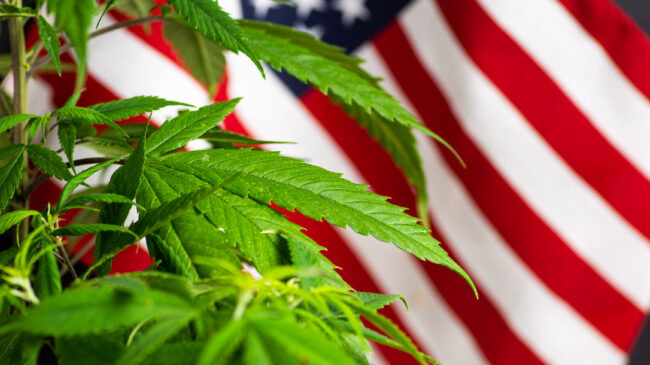Cannabis was an important agricultural commodity throughout early American history before Congress and the Roosevelt administration passed a prohibitive tax on the plant in 1937 and, later, with the Nixon administration imposed outright prohibition in 1970. But now, with public opinion clearly behind legalized marijuana, Congressional leaders are finally signaling a willingness to reconsider the federal prohibition of marijuana.
Over the last 25 years, beginning with the passage of California’s medical marijuana law in 1996, states have increasingly asserted their rights to control marijuana within their own borders.
Now, 36 states have legalized marijuana for medical purposes and 15 have legalized adult-use for recreational purposes (there are ongoing legal disputes over legalization in South Dakota and Mississippi). States have consistently led the way on marijuana legalization and have developed extensive regulatory regimes for cannabis markets and state marijuana regulators are looking to share the wisdom they have accumulated with Congress as they debate legislation to legalize it.
Regulators are doing so, in part, through an organization they founded to share ideas— the Cannabis Regulatory Association (CANNRA). In a letter to congressional leadership last month, CANNRA highlighted an array of issues the organization hopes Congress will address in any marijuana reform bill. Among the recommendations are:
- Protections for the regulatory systems states have already implemented;
- Access to financial services for marijuana businesses;
- Clinical research;
- Social equity policies;
- Product safety and testing standards;
- Public health data collection; and
- Federal taxes.
Although the letter provides only bullet points highlighting the major topics the organization believes to be important, there is much to say about each.
If the federal government decides to legalize marijuana, the bulk of regulatory authority will undoubtedly remain at the state level. Even if marijuana is removed from its current Schedule 1 drug status under the federal Controlled Substances Act, it will remain forbidden under many state versions of that law and states would retain the right to amend their own laws as they see fit. Of course, some states have already made those changes and federal authorities should not attempt to run roughshod over effective regulatory programs already in place.
However, Congress is likely to designate a federal agency as a regulator so it can monitor state regulatory systems and perhaps ensure security of transport and supply chain in the event states with legalized marijuana begin to engage in interstate commerce.
State regulators’ advocacy for product safety and testing standards at least partly bumps up against their call to safeguard existing regulations. Each state with a legal market has established these standards already, albeit somewhat differently. In the event federal legalization facilitates interstate commerce, the differing regulatory regimes might give consumers the ability to effectively shop regulatory structures to seek out those allowing the best, most consistent products anyway.
It’s long been known that clinicians’ ability to research the potential medical value of cannabis is severely limited. Under federal law, only the University of Mississippi is permitted to produce marijuana for research purposes. But recent testing of that location’s marijuana shows it bears little relation to the commercial-grade marijuana available across the country. In fact, it closer to industrial hemp. Clinicians need the ability to test the kind of marijuana that people actually consume.
CANNRA correctly points out that a lack of access to financial services in the industry makes the market opaque and difficult to regulate while encouraging exactly the types of black-market activities that anti-money laundering laws are ostensibly designed to prevent. It’s easy for a cash-based business to hide transactions whereas bank records provide audit documents. Recent proposals in Congress like the Secure and Fair Enforcement (SAFE) Act would do almost nothing to facilitate banking for the cannabis industry, as I’ve noted elsewhere. But in many ways, simply removing marijuana from Schedule 1 status would immediately fix the problem because proceeds from legal marijuana sales would then no longer be subject to provisions of the Bank Secrecy Act, allowing marijuana businesses to utilize the banking services available to other industries. Alternatively, Congress could also amend the Bank Secrecy Act directly to exempt the proceeds of legal marijuana sales.
Finally, state regulators make a rather strange appeal regarding federal taxation. They note that federal regulation will impose some costs and urge Congress to consider a federal tax on legal marijuana. However, marijuana is already taxed exorbitantly at the state and local levels in some places. Research shows consumers are highly sensitive to the price of legal marijuana and even slight price increases can nudge them back into the black market.
Much more relevant to Congress should be freeing legal marijuana businesses from the strictures of Internal Revenue Code 280E, which prevents them from claiming the same standard business deductions available to other entities and forces marijuana businesses to pay higher federal income taxes than other companies.
It’s very encouraging to see this discussion commence between state marijuana regulators and Congressional leadership. As it finally unwinds the failed war on drugs, Congress should also tap the expertise of industry leaders and policy and financial experts. States have been the laboratories of democracy and the regulation of marijuana rightfully remains within their realm of governance.

